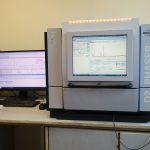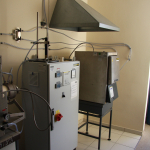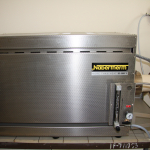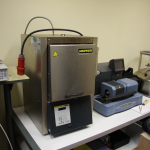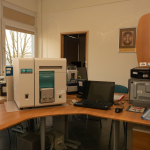Laboratory for the Synthesis of Inorganic Functional Materials
The laboratory specializes in preparing polycrystalline inorganic systems activated with transition metals and lanthanide ions based on the solid-phase synthesis, the Pichini method and the classic sol-gel method. The materials obtained in the laboratory are used as phosphors, scintillators, dosimeters, etc.
The laboratory is equipped with specialized instrumentation and analytical infrastructure, which includes:
- PULVERISETTE 7 planetary ball mill by Fritsch;
- TA Instruments SDT Q600 thermogravimeter enabling simultaneous DSC and TGA measurement of a sample or simultaneous TGA measurement of two different samples in an inert atmosphere (N2, Ar) or a reactive atmosphere (e.g. reducing – a mixture of 5 vol.% H2 in N2). The operating temperature range is from room temperature to 1500 ° C;
- LHT 04-17 muffle furnace manufactured by Nabertherm, equipped with an attachment enabling transformations in an inert atmosphere (N2, Ar) with a solenoid valve controlled by the furnace programmer (P310) (maximum operating temperature: 1750 ° C);
- RHTH 120/600/18 tube furnace by Nabertherm, designed for processes in an inert (N2, Ar) and reducing atmosphere (5 vol.% H2 in N2). Maximum working temperature: 1750 ° C;
- four stations for Pichini / sol-gel synthesis;
- Bruker D2PHASER powder diffractometer equipped with an X-ray tube with a copper anti-cathode (Cu Kα= 1.54 Å) and a LINXEYE® silicon strip detector (the maximum angular range (2θ) of the diffractometer operation ranges from 3 to 160 degrees, and for analyzing the obtained diffractograms are used with the specialized DIFRAC.EVA software and the PDF4 2020 database);
- ASAP 2020 surface and porosity analyzer by Micromeritics, which allows determining the specific surface area of samples and the size of the pores based on the measurement of the nitrogen adsorption isotherm (BET);



